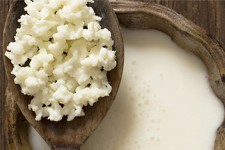
Japanese winter traditions
The snow, the cold, the search for comfort: even in Japan winter arrives with its icons and its traditions, from the dishes to the rituals of celebrations and festivities.
So let’s take a look at Japanese culture – from which Yakult originates – even through the generally less known typical habits of this period.
Here are our top 5:
1. JOYA NO KANE, 108 bell tolls
At midnight on December 31 the monks of all Japanese Buddhist temples ring 107 bell tolls, leaving the last one for the first second of the new year.
In total then 108 chimes, symbolizing the 108 “worldly desires” that the Buddhist religion indicates as a cause of suffering for mankind.
At each toll, one of these passions is moved away from the believers, to start the new year with renewed vitality.
2. OHMATO TAIKAI, tournament of archery for entry into adulthood
On the second Monday of January, all Japanese municipalities celebrate the entry in the age of majority of those who, in the previous year, have turned twenty.
The day before, in the temple of Sanjusangendo in Kyoto a kyudo is held – the traditional archery – tournament dedicated to them: 6 archers at a time shoot two arrows into only 4 targets placed at 60 metres; only those who, in less than two minutes, succeed in hitting the target with both shots will go to the next round.
In this way the temple – for over 400 years select theatre for kyudo competitions – welcomes the entry of the archers in the age of majority.
3. SAPPORO YUKI-MATSURI, the Snow Festival in Sapporo
For the northern regions and, in particular, for Hokkaido island with its capital Sapporo, winter most of all means snow and cold temperatures.
Several festivals celebrate the snow, turning it into a light and art material.
The most impressive and famous festival is held every February in Sapporo, which for over sixty years is adorned for the occasion with real works of art in the form of snow or ice sculptures exceeding 20 m in height
Whereas, in the same period, more intimate is the Snow Festival of Otaru, a small fishing town not far from Sapporo, whose streets are decorated by a full of charm succession of snow lanterns.
4. ONSEN, the 3.000 spas across Japan
The volcanic origin of many of the Japanese mountains is the reason of the wide spread of spas – onsen – particularly popular in the wintertime.
Placed all over the archipelago, they offer different temperatures and properties and are often located outdoors in very beautiful landscapes.
The hot springs of Jigokudani in Nagano are particularly famous for an unusual purpose: their customers are indeed the so-called Snow Monkeys, which find relief in these waters during the extreme conditions of winter in northern Japan. Oden and Nabe, winter is on the table
Even in Japan, the winter table welcomes elaborate and convivial dishes like Oden and Nabe, which appear from the north to the south of the archipelago during the cold season.
Oden: tuna, seaweed and soy sauce based broth with slow cooking times, are boiled together with very different ingredients such as: daikon (Japanese radish), chikuwa (fried fish in sweet batter), kinchaku (fried rice rolls wrapped in tofu), tamago yude (boiled eggs steeped in soy sauce for a long time) and much more, according to the local custom.
This is the most popular winter dish, widespread everywhere in this period: not only in trattorias and bistros but also in specialized restaurants.
Nabe: This is a more simple and homely dish than the previous one, but not less pleasing. It is a mixed stew with ingredients, also in this case, very different from each other, ranging from various types of vegetables to fish and meat. It is common for guests to prepare this dish together before dining at the same table for this reason and for the traditional custom of sharing it among family or friends, this dish carries with it the value of conviviality strongly felt in winter.


